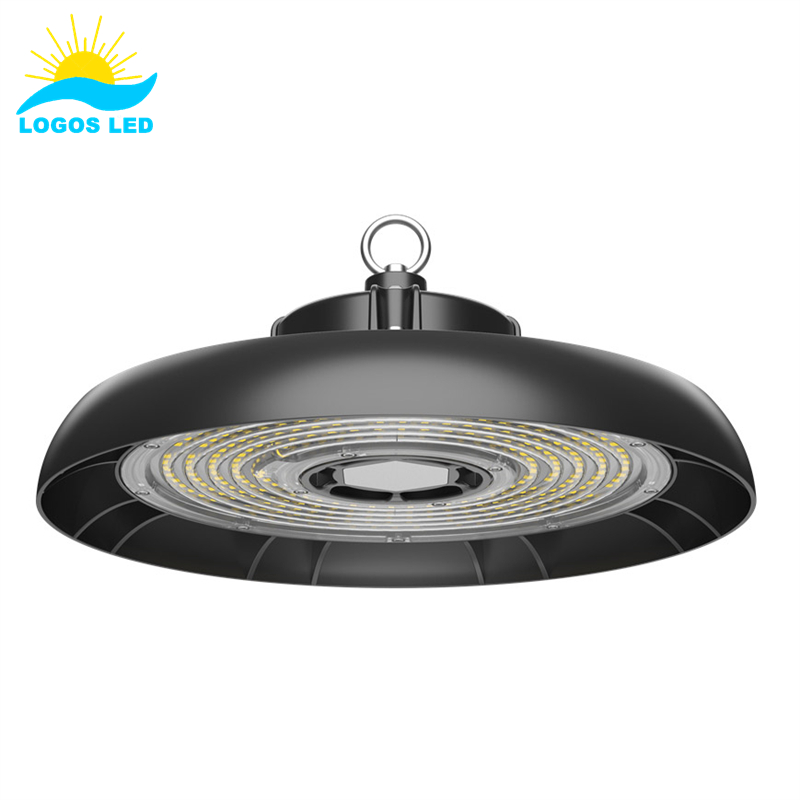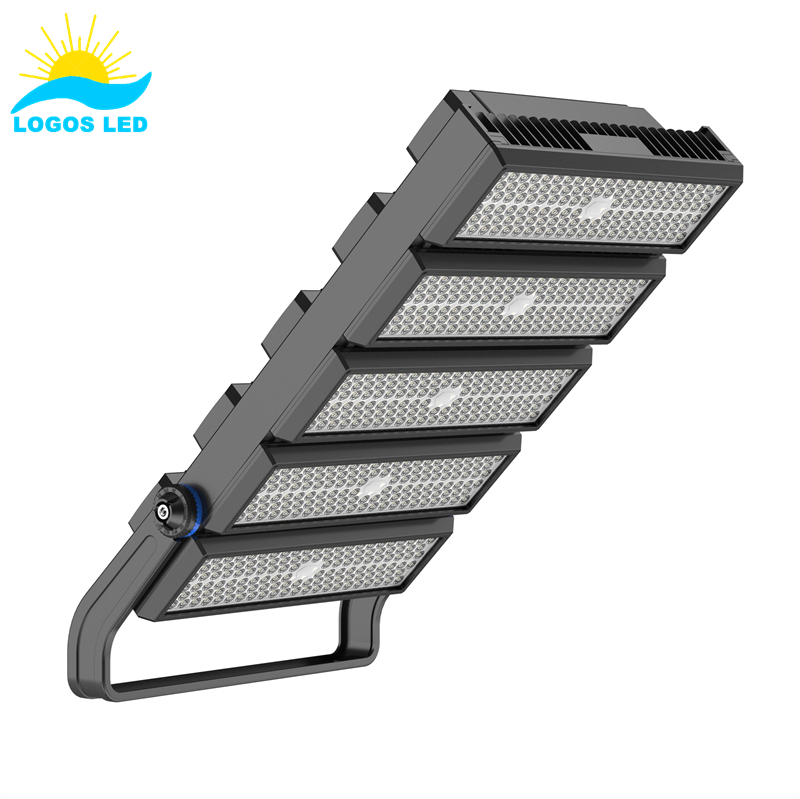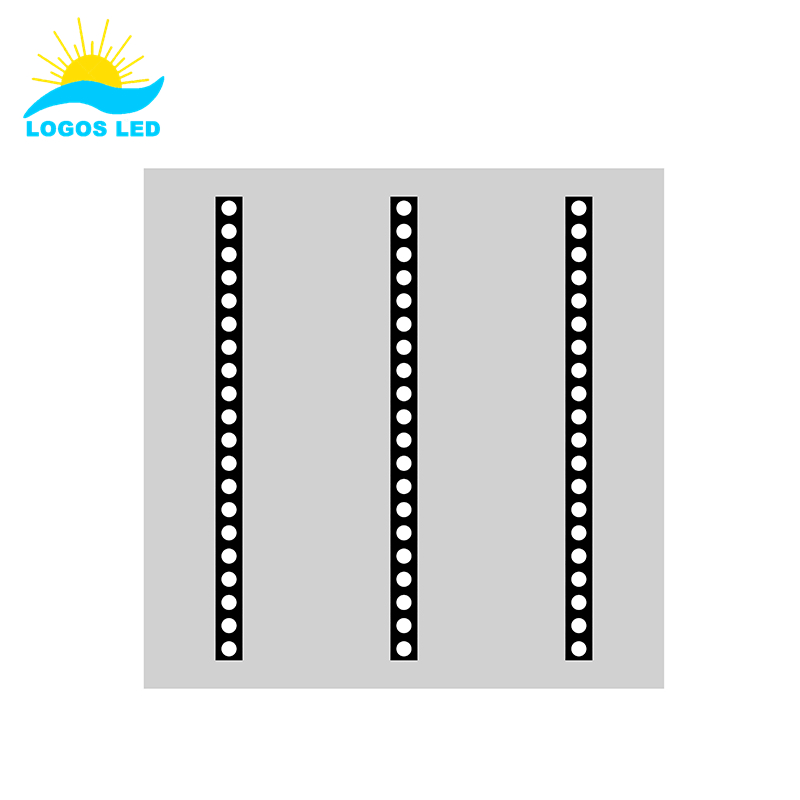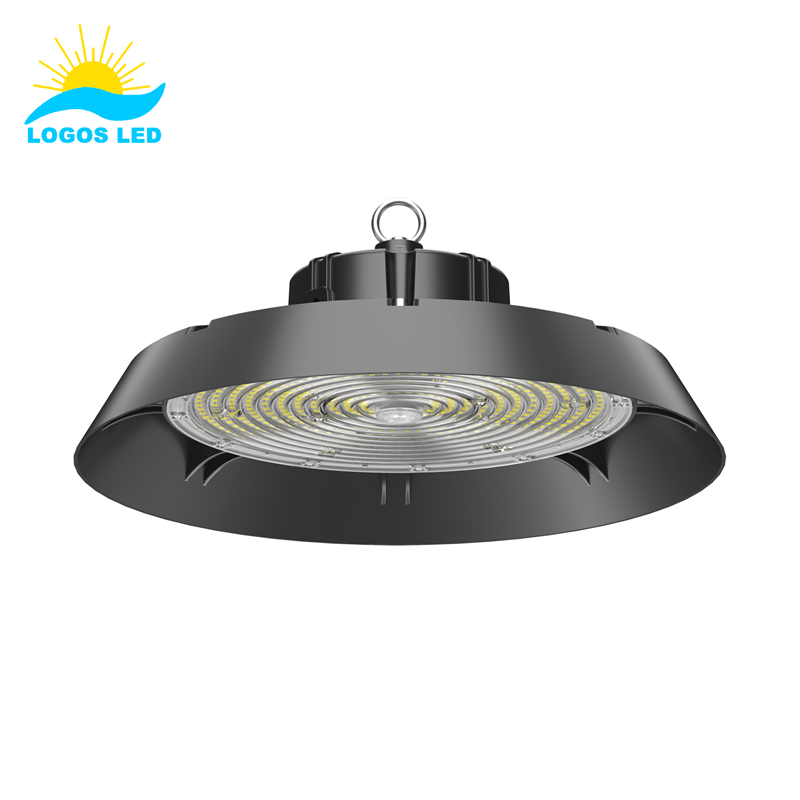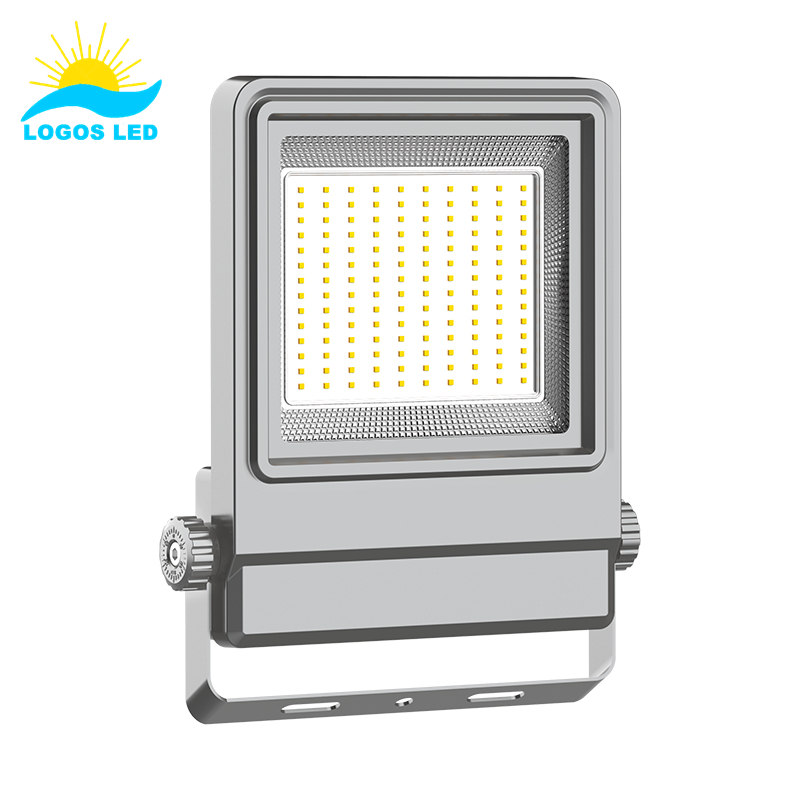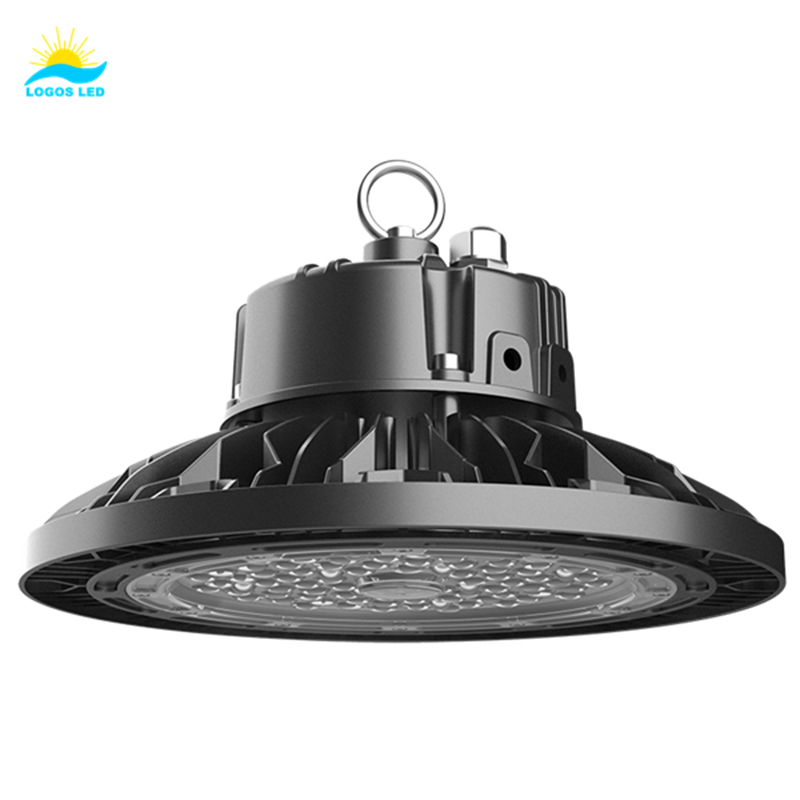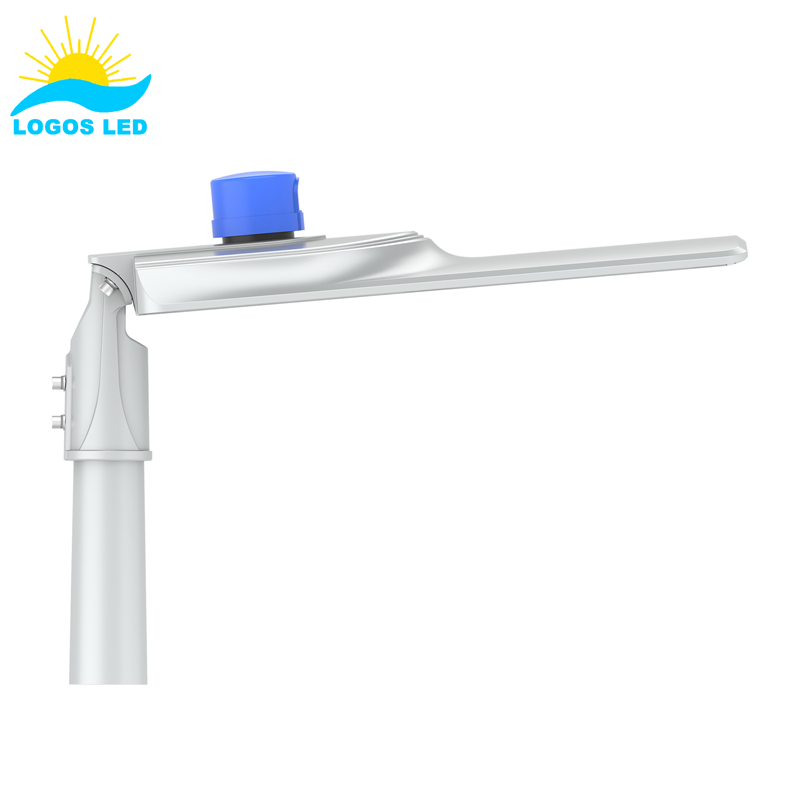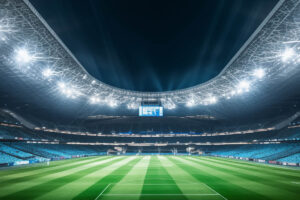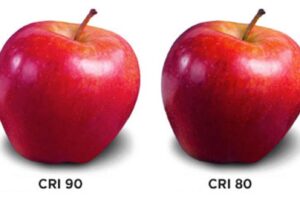LED lights are becoming increasingly popular in a variety of different settings. Not only do they provide bright, clear illumination, but they also consume considerably less energy than traditional lights. While many people see these benefits as positive aspects of LED lights, what is often overlooked is their ability to heat up. Contrary to popular belief, LED lights generate heat just like any other kind of light bulb.
Heat is the number one reason for LED failure/degradation.
While most LEDs are durable enough to operate in extreme environments, they will greatly decrease their life. LEDs don’t usually die, but they degrade at a predictable rate and heat accelerates this process.
LED Drivers are sensitive to heat, too. In fact, if the LED seems to have failed completely the first problem to check for is a failed driver.
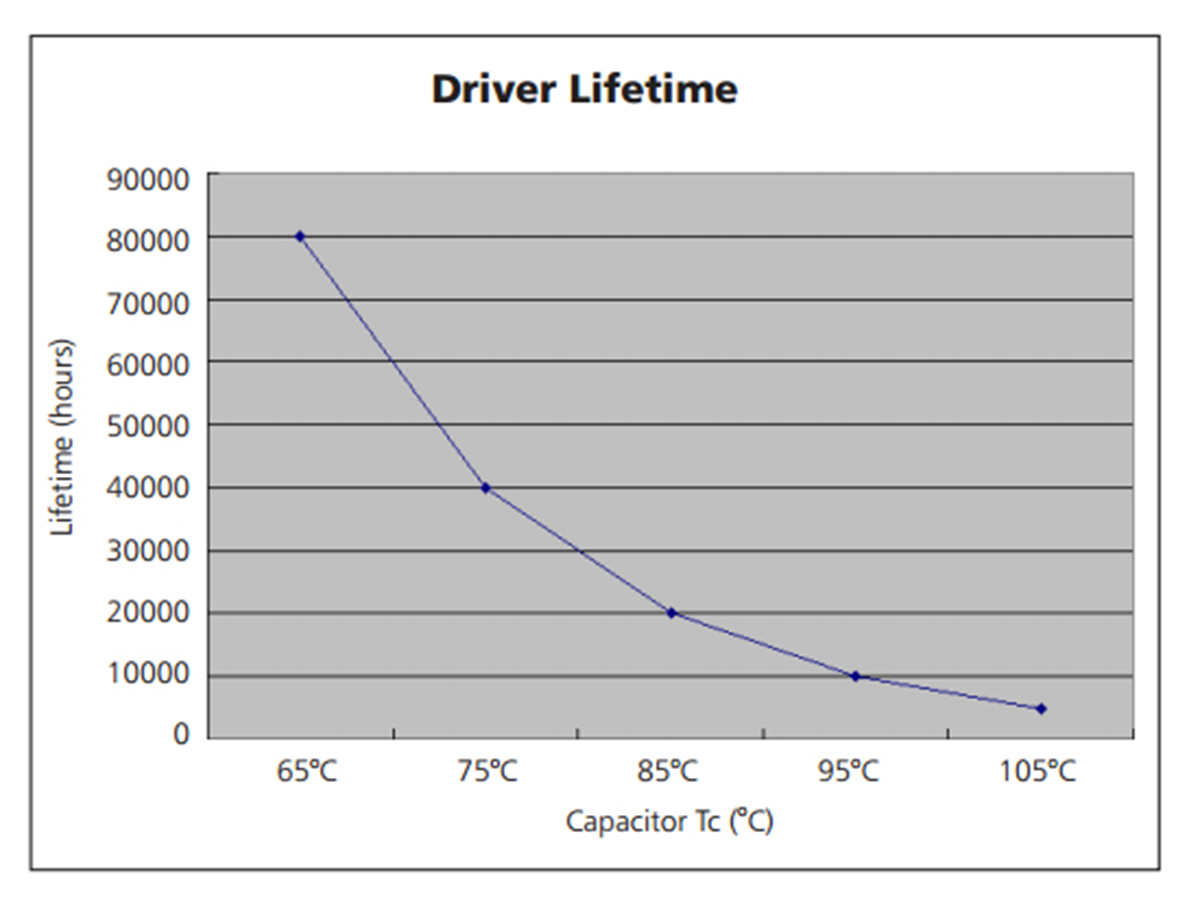
LED Power Supply Lifetime vs Temperature
Table of Contents
Where does the heat come from?
The LED chips create a significant amount of heat. Because the LEDs do not produce infrared radiation like traditional lighting, many believe that no heat is produced; this is incorrect. To create light, electricity is passed through a mixture of phosphors and other chemicals creating heat as a byproduct.
The driver, just like any other power adapter, heats up significantly. Think about your laptop charger as an example.
When heat is introduced by environmental factors, like the sun or ambient heat, dissipating the heat produced by LED components becomes increasingly important.
Possible ways to handle the light heat:
● Separate the driver from the LED chips. In some cases separating the heat sources will be enough to eliminate the need for more costly heat mitigation measures.
● Fixture coating with a polyester powder coat finish – protects the fixture from extreme temperatures and allows for better heat dissipation.
● Heat sink fins with slots between the fixture can help facilitate convection by increasing surface area and allowing airflow.
● Making slots vertical on the heat sink and fixture will limit dust collection. Dust acts as an insulator and should be removed periodically.
What makes LED light stand out is their highly efficient cooling system, which ensures that this heat is quickly absorbed and dispersed so that it does not overheat the surrounding area. This unique property of LED lights makes them a great choice for a wide range of applications, from indoor lighting to industrial settings and much more. If you’re looking for lights that can provide brilliant illumination without creating excessive heat, then look no further than LED lights.
Request A Free Quote Now!
Send us a message if you have any questions or request a quote. We will get back to you ASAP!



